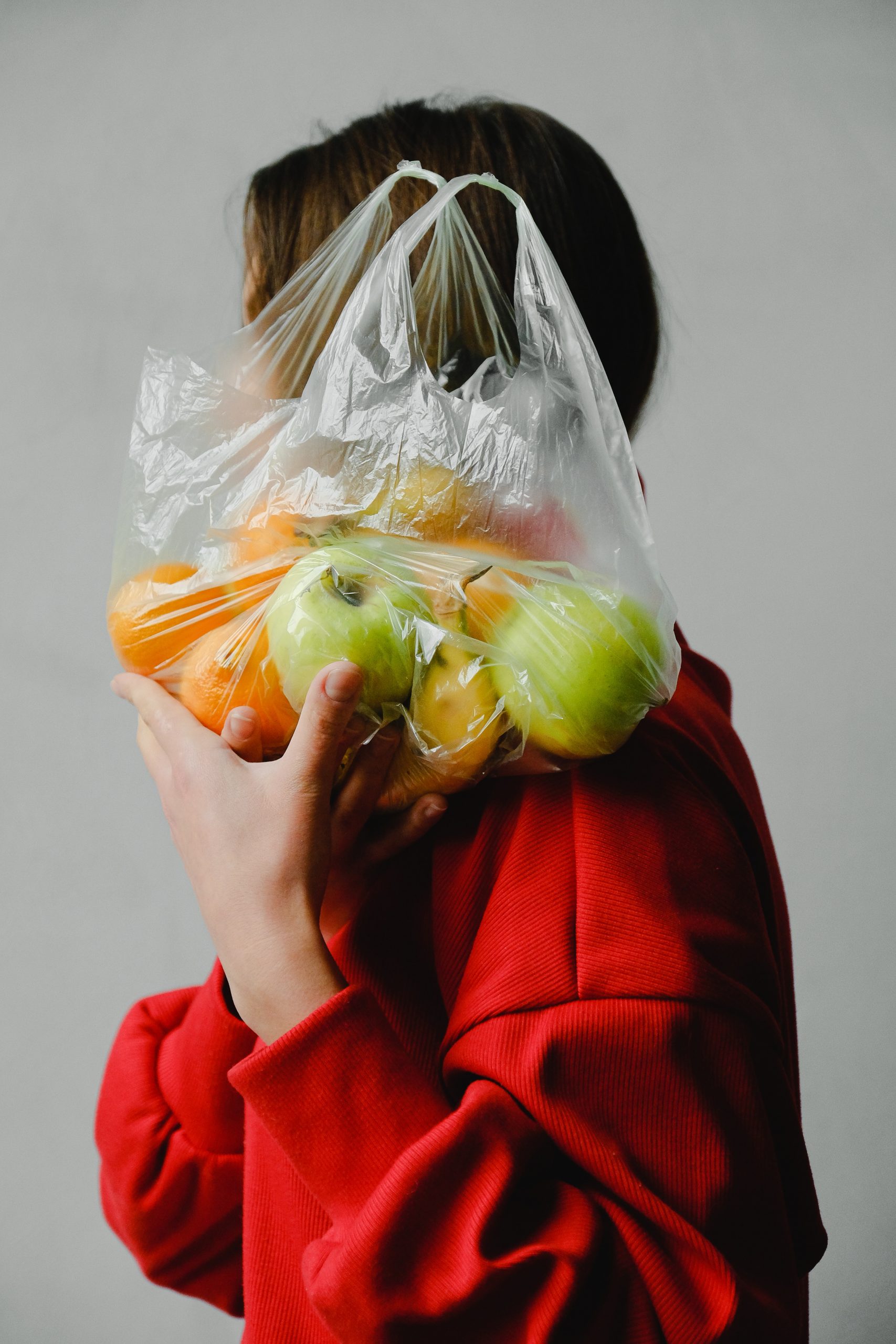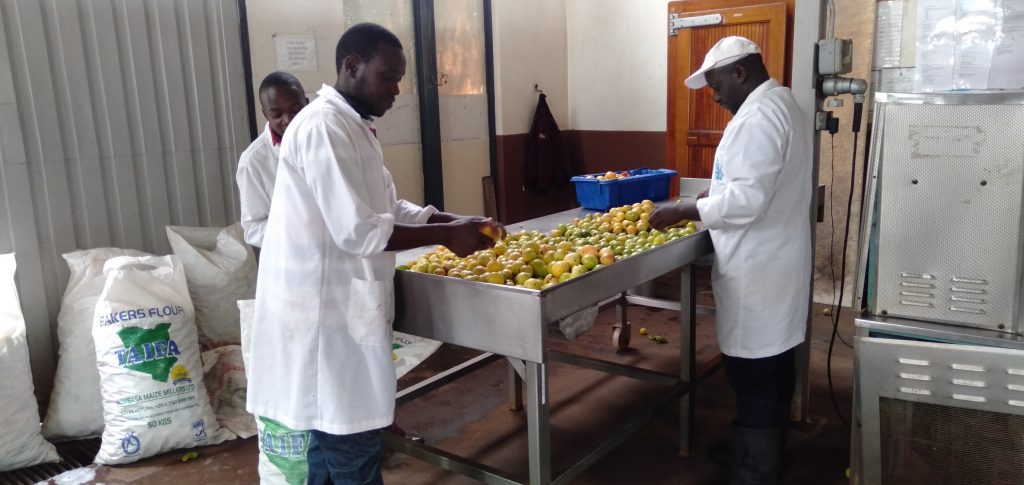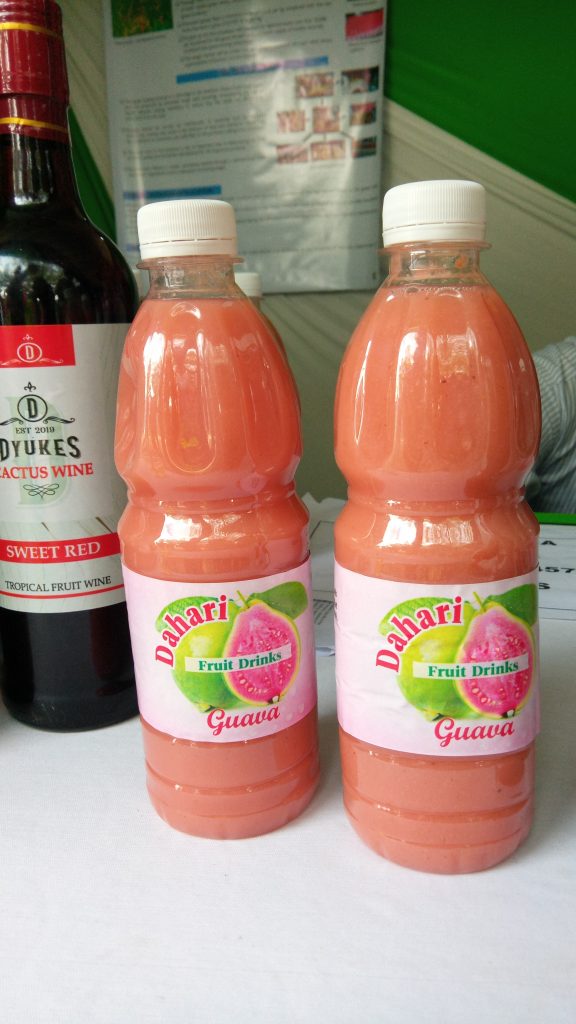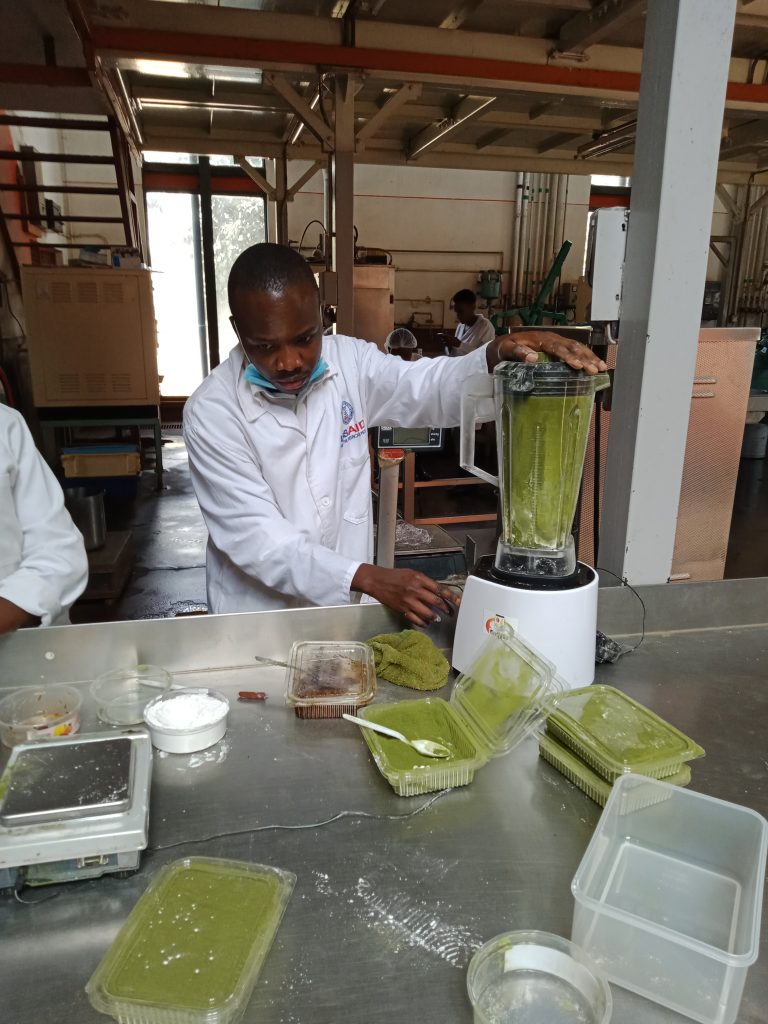How underutilized local fruits and vegetables can help improve nutrition in East Africa
In East Africa, up to 50% of fruits and vegetables are lost after harvest. At the same time, there are micronutrient deficiencies in the population that could be addressed with increased fruit and vegetable consumption. From 2018 to 2022, the FruVaSe project with partner universities from Kenya, Tanzania and Uganda, the University of Göttingen as project leader and the University of Applied Sciences Erfurt investigated the potential of local and so far little researched fruit and vegetable species for processing and preservation. In addition, the exact nutrient composition, marketing, consumer demand, and the use of residues such as fruit peels and pits for animal feed, biogas and biochar production were also explored. The project was funded by the German Federal Ministry of Food and Agriculture.
Fruit and vegetable loss
In East Africa, so-called „hidden hunger“, i.e. a lack of vitamins and minerals, is widespread. Fruits and vegetables, as recognized sources of many important micronutrients, are often underrepresented in the diet – even though hundreds of vegetables and fruits grow naturally there. Local fruit, such as guavas in Kenya, sometimes rots under the trees in season, while guava juice is produced in the country only from imported fruit. Green leafy vegetables, such as cowpea leaves or African nightshade, often wither after harvest during transport and storage because of the long distances between the growing region and centers of consumption and the lack of cold chains.
Fruit and vegetables in every season?
The aim of the FruVaSe project was to test and adapt different processing methods to produce shelf-stable and nutrient-rich products that can also contribute to a balanced diet outside the fruit and vegetable season (Keding et al. 2023). Several nutrient-rich and shelf-stable products have been developed: in Kenya, guava nectar fortified with moringa leaves (Omayio et al. 2022) and a cowpea leaf soup mix (Owade et al. 2022); in Tanzania, cashew apple juice, dried cashew apples (Aluko et al. 2023; Dimoso et al. 2020) and fermented African nightshade relish (Sangija et al. 2022), and in Uganda, jackfruit powder and jackfruit slices testing i.a. refractance window drying (Nansereko et al. 2021, 2022) and cassava leaf powder (Natukunda et al. n.d.). Another research group calculated that by adding some of these products to the standard diet of women and children, gaps in nutrient supply could be filled and the cost of food could even be reduced in some cases (Sarfo et al. 2022).
The sensory properties of the developed products were predominantly evaluated very positively and the customers‘ willingness to pay allowed clear profit expectations for some products, especially in urban areas (Tepe et al. 2021). As a contribution to a sustainable life cycle concept, it was shown that residues from guava processing can be used as an admixture in chicken feed (Ogega et al. 2022) and that residues from jackfruit processing can be fermented together with cow and chicken manure for biogas production (Mibulo et al. 2023) or also used for the production of biochar, which in turn can be used as fertilizer in vegetable production (Nsubuga et al. 2023).
In addition to being published in scientific journals, the project results were made available to local communities as training materials such as manuals, leaflets, and posters, and were delivered to selected groups in a „training of trainers“ format. The results inspired some of the PhD students involved in the project to come up with further processing ideas, such as Dr. Duke Gekonge of the University of Nairobi: „I was fascinated to produce, standardize and market a variety of guava products from the wild, underutilized but highly nutritious Kenyan guavas that had not been commercially exploited until then – guava yogurt and guava wine, for example, in addition to guava nectar.“ His products were honored with second place at the University of Nairobi Innovation Week in April 2022.
Recommendations from the project
As long as fresh fruits and vegetables are not available in all seasons, the processing methods tested by the FruVaSe project offer an inexpensive way to provide a micronutrient-rich diet that meets demand from local fruits and vegetables – some of which are available in surplus yet underutilized. Although the products received positive reviews from potential consumers, more information is needed about the health benefits of these products. Because processed products are often viewed as „unhealthy“ across the board, a precise definition and new classification of „processed fruits and vegetables“ in the NOVA processed food classification is needed. In addition, nutritious processed fruits and vegetables should be included in local dietary guidelines and programs.
Supportive policy interventions will be needed, such as providing low-cost credit for fruit and vegetable production, processing (purchase of equipment), and renewable energy; linking farms with fruit and/or vegetable surpluses to processing facilities; organizing water and energy provision, which should be at the community level, not the household level; and, finally, raising awareness among the population about how new fruit and vegetable products can be added to traditional meals.
References
Aluko, A., Makule, E. & Kassim, N. (2023) Effect of clarification on physicochemical properties and nutrient retention of pressed and blended cashew apple juice. Food Science and Nutrition, 1-13. https://doi.org/10.1002/fsn3.3222
Dimoso, N., Aluko, A., Makule, E., & Kassim, N. (2020) Challenges and opportunities toward sustainable consumption and value addition of cashew apples in Tanzania. Outlook on Agriculture, 50(2), 169–177. https://doi.org/10.1177/0030727020941164
Keding G.B., Tepe, J., Lemken, D., Alves, L., Wydra, K.D., Pawelzik, E. (2023) Verarbeitungstechniken für überschüssiges Obst und Gemüse in Ostafrika. Ernährung im Fokus 01 2023. Pp. 75-79 https://www.bzfe.de/fileadmin/user_upload/5382_2023_eif_x009.pdf
Mibulo, T., Nsubuga, D., Kabenge, N. & Wydra, K.D. (2023). Comparative Study Biogas Production from Jackfruit Wastes, Banana Peels, and Pineapple Peels Co-digested with Cow Dung. Journal of Sustainable Bioenergy Systems, 13, 1-15. https://doi.org/10.4236/jsbs.2023.131001
Nansereko, S., Muyonga, J. & Byaruhanga, Y.B. (2022) Influence of Drying Methods on Jackfruit Drying Behavior and Dried Products Physical Characteristics. Hindawi International Journal of Food Science. https://doi.org/10.1155/2022/8432478
Nansereko, S., Muyonga, J., & Byaruhanga, Y.B. (2021) Optimization of drying conditions for Jackfruit pulp using Refractance Window Drying technology. Food Science & Nutrition, 1–11. https://doi.org/10.1002/fsn3.2694
Natukunda S, (n.d.) Potential of cassava leaves in improving micronutrient nutrition in Kasese district, Uganda. PhD thesis at Makerere University, Kampala, Uganda.
Nsubuga, D., Kabenge, I., Zziwa, A., Yiga, V.A., Mpendo, Y., Harbert, M., Kizza, R., Banadda, N. & Wydra, K.D. (2023) Optimization of adsorbent dose and contact time for the production of jackfruit waste nutrient enriched biochar. Waste Disposal & Sustainable Energy, https://doi.org/10.1007/s42768-022-00123-1
Ogega, E.B., Gachuiri, C.K., Maina, J.G. and Abong’, G.O. (2022) Effects of inclusion of guava fruit processing by-product in broiler diets on performance. Livestock Research for Rural Development Volume 34, Article # 92. Available at: https://lrrd.org/lrrd34/10/3492ogeg.html
Omayio, D., Abong, G., Okoth, M., Gachuiri, C. & Mwangombe, A.W. (2022) Physicochemical and Processing Qualities of Guava varieties in Kenyan Guava. Int J Fruit Sci. 2022. https://doi.org/10.1080/15538362.2022.2039342
Owade JO, Abong’ GO, Okoth MW and Mwang’ombe AW (2022) A benefit-cost analysis approach for determining the optimal processing of micronutrient-enriched cowpea leaf soup mixes. Frontiers in Food Science and Technology, 2:874557; https://doi.org/10.3389/frfst.2022.874557
Sangija, F., Martin, H., & Matemu, A. (2022) Effect of lactic acid fermentation on the nutritional quality and consumer acceptability of African nightshade. Food Science & Nutrition, 00, 1– 15. https://doi.org/10.1002/fsn3.2912
Sarfo, J., Pawelzik, E. & Keding, G.B. (2022) Are processed fruits and vegetables able to reduce diet costs and address micronutrient deficiencies? Evidence from rural Tanzania. Public Health Nutrition 25(9), 2637–2650 (2022). https://doi.org:10.1017/S1368980022000982
Tepe, J., Benali, M. & Lemken, D. (2021) Consumer demand for novel fruit and vegetable products with extended shelf lives in East Africa: a multinational multi-product analysis. Public Health Nutrition, Dec 10, 1-11. https://doi.org/10.1017/S136898002100478X
Contact
Dr. Gudrun Keding
Prof. Dr. Elke Pawelzik
Georg-August-Universität Göttingen
Fakultät für Agrarwissenschaften
Department für Nutzpflanzenwissenschaften – Abteilung Qualität pflanzlicher Erzeugnisse
Carl-Sprengel-Weg 1, 37075 Göttingen
E-Mail: gkeding@gwdg.de; epawelz@gwdg.de





